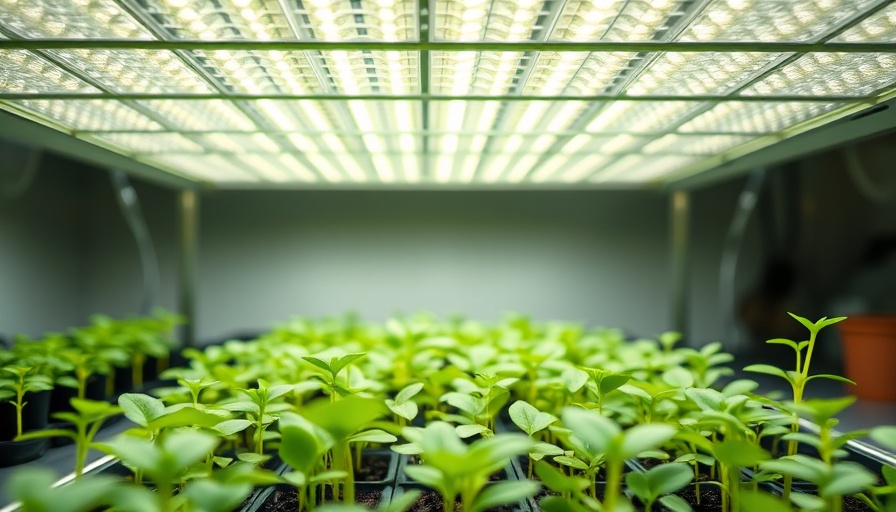
How DIY Grow Light Shelves Transform Indoor Gardening
As the chill of winter begins to recede, many green-thumbed enthusiasts eagerly anticipate the gardening season. However, for those of us living in colder climates, the window for seed starting can be frustratingly short. Enter DIY grow light shelves—an innovative solution that offers both practicality and cost-effectiveness. This guide will explore how to create an efficient indoor grow light setup, ideal for nurturing seedlings that will thrive when they eventually take root in the great outdoors.
The Importance of Grow Lights in Seed Starting
Grow lights are a game-changer for indoor gardeners. They provide essential light during those critical early stages of plant growth, when natural sunlight may still be scarce. By jumpstarting seedlings indoors, gardeners can create robust plants void of the risk of leggy growth that often occurs when seedlings stretch toward weak sunlight. This alternative not only promotes stronger roots but also sets the stage for a flourishing garden come spring.
A Budget-Friendly DIY Approach to Grow Light Shelves
Without the need to invest in an expensive setup, creating your own grow light shelf can be both fun and fulfilling. Using just an affordable IKEA shelving unit and some basic utility lights, you can fashion an effective environment for your plants. Start by selecting a shelf that fits your space and can accommodate multiple trays of seedlings. Depending on your setup, you may choose to hang lights from the shelf with adjustable chains or install shelving fixtures with built-in lighting. As you place your seedlings on the shelves, ensuring they are consistently receiving adequate light, your indoor growing space transforms into a thriving garden.
Common Mistakes: Avoiding Leggy Seedlings
One of the most common pitfalls when starting seeds indoors is the emergence of leggy seedlings. This undesirable outcome arises when plants become starved for light and overreach, creating weak, elongated stems. To combat this, ensure your grow lights are not too far away from your seedlings; ideally, they should be positioned just a few inches above. Many gardeners find it useful to place two lights over each tray of seedlings to adequately penetrate the leaf canopy. Furthermore, using adjustable height settings allows you to accommodate growing seedlings.
Inside Tips for Choosing the Right Grow Lights
When it comes to selecting grow lights, understanding the different types available can enhance your indoor gardening experience. Generally, fluorescent lights are popular for seed starting due to their cost-efficiency and effectiveness. LEDs are another essential choice—they are energy-efficient and have a longer lifespan. Whether you choose one or a combination, aim for full-spectrum lights that mimic sunlight as closely as possible, providing your seedlings the best chance at thriving.
Incorporating Design and Functionality
Not only should your grow light shelf be functional, but it can also serve as an aesthetic addition to your interior. Incorporate labels for your trays and consider decorative pots that complement your home decor. Going the extra mile in design not only maximizes visual appeal but also creates a nurturing environment that encourages plant growth.
FAQs: Your Grow Light Shelf Questions Answered
1. Can any shelving unit be used for a grow light setup?
Absolutely! While IKEA is a popular choice for many gardeners due to its affordability and style, almost any sturdy shelving unit can be adapted. Look for racks that allow space for light fixtures while maintaining stability.
2. How much electricity will grow lights consume?
The energy consumption of grow lights varies by type and wattage. LEDs generally consume less electricity than fluorescent lights, making them an ideal long-term investment for indoor gardening.
3. When should I take my seedlings outdoors?
As a rule of thumb, once your seedlings have developed true leaves and the risk of frost has passed, you can begin the process of hardening them off by gradually exposing them to outdoor conditions.
Your Path to a Thriving Indoor Garden
Passing the warmth of the indoor gardening spirit to your indoor space through DIY grow light shelves is not only a rewarding endeavor but also essential for seed starting success. Whether you're an experienced gardener or a newbie, these tips will inspire you to cultivate a vibrant indoor garden. Spring will be here before you know it, and with the right preparation, your seedlings will be ready to embrace the outdoor world.
 Add Row
Add Row  Add
Add 




Write A Comment